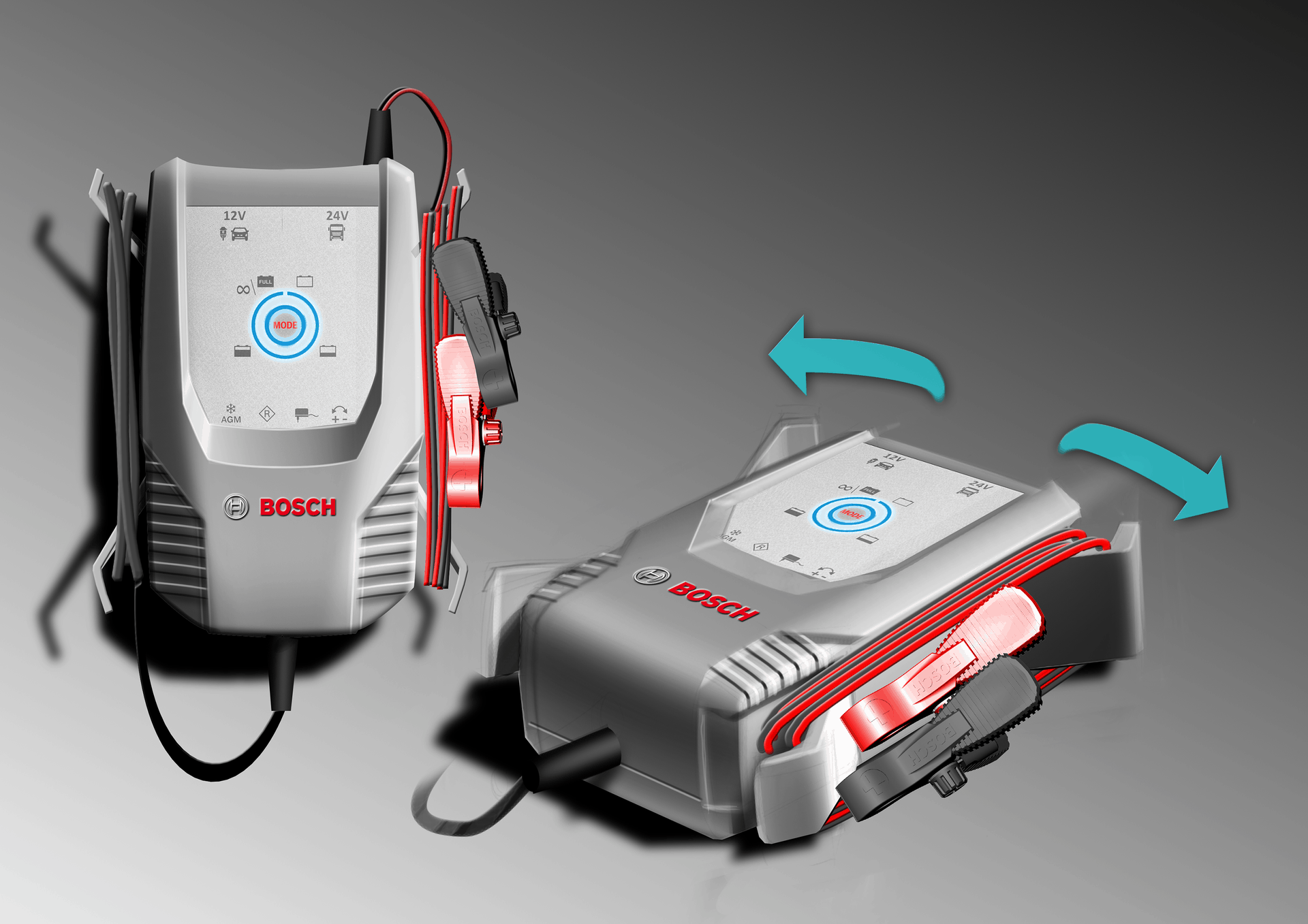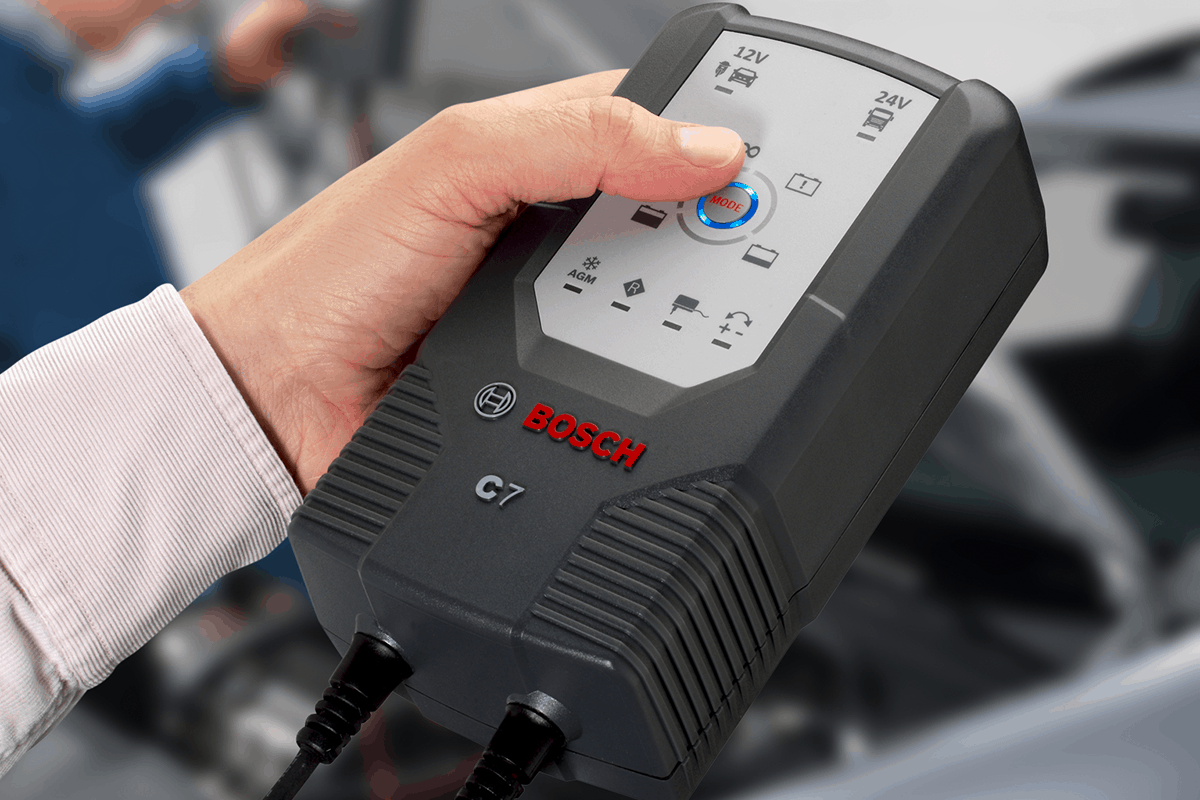Interface design – reduction to the essentials
Why are the Bosch C3 and C7 starter battery chargers so special?
Most drivers have already had experience with empty starter batteries. This annoying annoyance often occurs after longer periods of inactivity and can usually be avoided with a suitable charger. But what does an interface for a charger have to look like so that it can also be operated by the technical layperson? Which functions are really relevant to offer the operator added value?
Robert Bosch GmbH commissioned Projekter Industrial Design with the design development for two chargers in different performance classes in the consumer sector.
- Projekt: Starterbatterie-Ladegeräte
- Kunde: Robert Bosch GMBH
- Leistungen: Entwicklung eines Benutzer-Interfaces, Ergonomie, CAD-Konstruktion, Visualisierung
- Award: Red Dot Design Award
- Jahr: 2011
At the beginning there was a detailed analysis of the properties that are really important for the user.
INFORMATION
- Current activation state
- Selected charging mode
- Battery charge level
FUNCTION
- Required loading function
- medium for information output
- accesories
HANDLING
- Controls / Buttons
- orientation of the device
- Orientation of the cable outlets

ANALYSIS OF FUNCTION AND HANDLING
In Benutzertests stellte sich sowohl beim Halten in der Hand, wie auch im stationären oder teilstationären Betrieb, eine vertikale Ausrichtung des Ladegerätes als besonders vorteilhaft heraus. Die herkömmliche Verteilung der Kabelauslässe auf die beiden kurzen Gehäuseseiten ist eher hinderlich. Die Kabel sind häufig im Weg.
The resulting positioning of all cables on a common side also resulted in a positive consequence for the interface design. Both when hanging up and holding the device in one hand, reading the status information and one-handed operation are very convenient. The cables always hang down in bundles and disturb as little as possible.

USER INTERFACE
Right from the start, the aim was to develop an interface that only provides the user with the information that he actually needs. For example, the exact indication of the battery voltage on a display is usually not understandable for the average consumer. Few people know that a normal 12V starter battery is almost empty at a voltage of 12.0V and is only considered fully charged from 12.8V. According to the motto "Design for All" (DfA), it makes much more sense to put this information in a form that everyone can understand.
Both chargers can be held, operated and read comfortably in one hand.
Many settings, such as the charging voltage or the control of the charging characteristic, are made automatically by the microcomputer control depending on the battery connected. This allowed us to create an interface design with just a single button. The operation was thus extremely understandable and clear.

CONCLUSION
It's not always just about faster, further, higher, more functions and features, but about which properties really offer the user an advantage. The interface design was clearly the focus here. The user interfaces of the loaders deliberately do without any frills such as digital displays.


